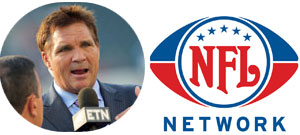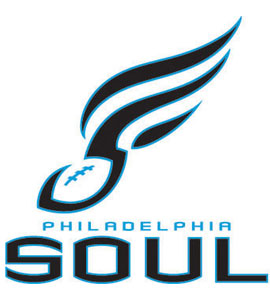ARE ANALYTICS THE ANSWER TO KEEPING ATHLETES ON THE FIELD?
Al Thompson
 Dr. Sean McMillan likes analytics as a tool, not as a rule.
Dr. Sean McMillan likes analytics as a tool, not as a rule.We’ve had analytics in business for many years. It has done wonderS with efficiency in all areas of business including warehousing, manufacturing and services.
Oakland Athletics General Manager Billy Beane changed sports forever by using sabermetrics aka analytics to field a low budget but winning team using statistics as the main barometer to forge his roster.
It worked so well there were books and even a movie made of his breakthrough we know as “Moneyball,” penned by author Michael Lewis.
Sports medicine has been incorporating statistics as part of its growth, especially in the area of orthopedics.
Professional teams and major universities invest enormous amounts of money to build their programs and the product of course is what is put on the field and on the court.
Keeping players healthy is paramount, so the demand for the best research is at an all-time high.
Recently Tracey Romero wrote a story for “Orthopedics-This Week” about a recent study that attempts to do research on athletes to determine when he or she is at the most risk for injury.
Obviously this would help in preventing injuries and at the same time protect a team’s investment in that athlete.
Romero’s story looks at the University of Tennessee Chattanooga in their study, “Mitigating sports injury risks using Internet of Things and analytic approaches,” published in the journal Risk Analysis, decided to seek a better way of identifying individual athletes’ risk of injury.
“The researchers developed a framework that measures an athlete’s risk using Internet of Things (IoT) technology. The injury risk screening procedures are administered using wireless devices that are connected to a cloud server. This connection between phones, computers and other devices is what the researchers mean when they refer to the Internet of Things.
“Both an athlete’s previous injury history and injury surveillance data, including longitudinal tracking of exposure to game conditions, gathered by the phones and devices are used to create a real-time ‘dashboard’ of the athlete’s status.”
Romero went on to write that during the study, “the researchers tracked 43 players from a National Collegiate Athletic Association (NCAA) Division I-Football Championship Subdivision (FSC) football team from one month before the start of preseason to the end of the season. They found that athletes who played at least eight games had more than three times greater odds of injury occurrence than those who played fewer than eight games. Forty-two percent of those athletes who had at least one risk factor sustained an injury during the season.”
Dr. Sean McMillan of Lourdes Medical Associates of South Jersey was asked about the Romero’s article and the idea that there could someday be actual “dashboards” on top athletes predicting when they would be at the highest risk to get hurt.
Dr. McMillan said the direction was sound but pumped the brakes on massive computer screens with people in white coats and clip boards running a coach’s bench.
“I picture Drago in ‘Rocky IV’ where they sort of measure him at all times to find peak performance,” Dr. McMillan said with a laugh. “But there is something to it, when you reach a point and you are fatigued, you are at more a risk for injury…the ACL and other fatigue injuries. I think there is something to it, we’re just trying to figure it all out because there are a lot of studies out there that vary and how you calculate these things.”

Eagles want Carson Wentz throwing to Alshon Jeffery, not talking to him while on crutches. Michael Corsey @ Michael Corsey Photography
Studies on how to read an athlete’s makeup are being discussed in medical circles.
“It’s talked about a whole lot more,” Dr. McMillan said. “We’ve talked about the Sixers, if you remember a couple of years ago, the Dallas Mavericks were doing the same thing where they actually had guys running up and down the court with fitbit (trackers) on and they were sort of able to monitor them and figure out when they were fatiguing and for each play they had what was their optimal fatigue level: heart rate, sweat, whatever it may be…blood pressure and they would rest them based upon that.
“I think there is something to be said for that, finding that optimal, for-the-moment stats.”
With so much money being invested in athletes today, in some cases hundreds of millions of dollars in just one player it makes sense teams would look towards the orthopedics community for state-of-the-art data and information on what will put an athlete at risk for injury.
Dr. McMillan was asked if orthopedics is actually looking at methods to establish some kind of realistic dashboard on athletes. He said the technology wasn’t just for athletes, but everyone.
“We do actually,” Dr. McMillan said. “I was just at the American Academy of Orthopedics in new Orleans at the end of the Year. One of the things that was getting a lot of attention was the little monitors they having patients wear post operatively. They give feed back through and app to the physician as far as … if someone is bending the knee the appropriate amount of degrees post operatively. Are they doing too much? Is the heart rate going up indicating that there may be doing a little more stress functioning than they should? So it’s giving real time feedback to the doctors as far as how someone’s recovery is going. It’s pretty neat actually. I think it’s something we’re all going to lean toward.”
Dr. McMillan commented further on the article in “Orthopedics-This Week.”
“One of the interesting things about Tracey Romero’s article, they talked about taking some of an athlete’s previous injury history and feeding it into the equation because everything is multi-factorial,” he said. “I think that’s something you look at that you have to be careful about because you don’t want someone to be considered damaged goods. Like a kid who was injured in high school with and ACL, does that mean he’s at a higher risk down the road or not? We all agree with that but you don’t want to people to say maybe he’s not a scholarship athlete or maybe there’s a risk of signing him in the future. “So I think we’re going to take the good and the bad with these stats but we don’t want to put too much into that. We still want to make our own independent decisions based on physical exams.”

Dr. McMillan says getting kids to use the right form early can prevent injuries in the future. Photo courtesy of the Miami Dolphins.
Last week now former Eagles wide receiver Torrey Smith said when it comes time, the Eagles will “back up a Brinks Truck” when the Birds go to sign Carson Wentz to his long term franchise quarterback deal.
But the sobering reality with Wentz is he has missed significant time three years in a row dating back to his senior year at North Dakota State in 2015 (broken bone in his throwing wrist that required surgery), his rookie season with the Eagles (hairline fracture in his ribs) and 2017 (ACL & LCL Tears, both Grade 3).
So it is obvious the Eagles will want to make sure Wentz is as close to 100 percent as he can be before making that commitment.
“You think about stocks,” Dr. McMillan said. “You have guys who are trained to watch the trends of the market and make sure you have a way of avoiding highs and lows. That’s the same thing with our athletes. You want to find a way to say ‘alright, when can you get Carson back?’ or whenever that may be, safely and effectively without putting him at risk along the way. That’s where we do different things with functional movement screens that will do that. There are tests we can put athletes through to look at their body motion and say alright, you’ve got poor flexibility or your motion is just not quite right in your shoulder. You are at a high risk of an injury, let’s correct that preemptively. So we are doing things like that now.”

We will never know how productive Sam Bradford would have been if he could have stayed on the field: Photo by TJ Engler / contrastphotgraphy.com
But the doctor cautions.
“I think some of the science fiction look at this knowing exactly when someone is going to get hurt, I think that’s a little ways off.”
Dr. McMillan has teamed up with former Major League baseball player Brandon Duckworth to start a program they call “Lourdes Sports Medicine Sports Awareness Program.”
It is a program that helps parents and coaches make good, educated decisions with their kids and student-athletes who are serious about playing sports.
“A lot of things we do in the offices are first and foremost to ask the young player, what are your aspirations?” Dr. McMillan said. “If you’ve got a sophomore in high school, what’s your long-term goal? Are you looking to play in college or beyond? Or is this something you’re doing now for fun and health and you are going to college to be a lawyer or something else?
“Once we understand that base we can educate them better. If we find a kid who is playing a sport like say baseball and he’s going a little excessive, we know, based on the data that’s out there, you are at a higher risk for injury. We’ll educate the patient, we’ll educate the parent and ultimately the coaches to make sure that we can protect them.
“To that end we talked about different things we are doing, Brandon Duckworth and myself and some other guys at the clinics we can educate them on the field and have some of our therapists work with them and put them through these functional movements screen where we can see if someone is at risk for a shoulder injury or elbow injury based on their mechanics or their appearance and we’ll preemptively get them involved with a re-hab program. They can play through it, we can just change their mechanics along the way.”
**************
Dr. Sean McMillan is the Chief of Orthopedics and Director of Orthopedic Sports Medicine at Lourdes Medical Center of Burlington County. Additionally, he is an assistant professor of orthopedic surgery at Rowan University-School of Osteopathic Medicine (RU-SOM).
Dr. Sean McMillan has offices in Cherry Hill and Burlington NJ – 856-796-9393
If you want to book the “Lourdes Sports Medicine Sports Awareness Program.” at your school or facility here is how you contact them.
* Dr. McMillan can be reached at 1-609-747-9200 Cherry Hill & Burlington, NJ.
* Brandon Duckworth can be reached at duckworthpitching@gmail.com.












